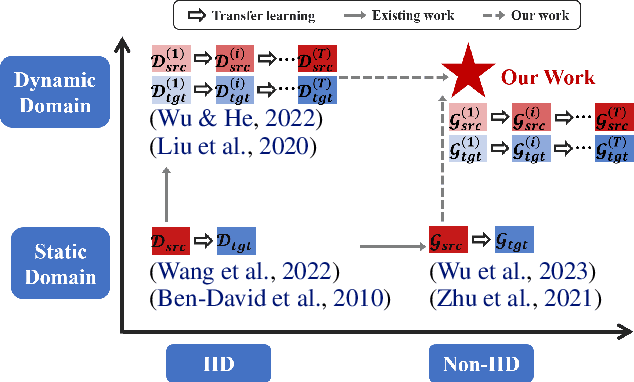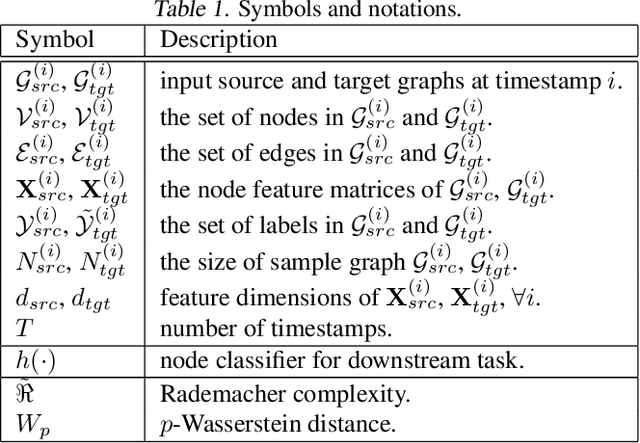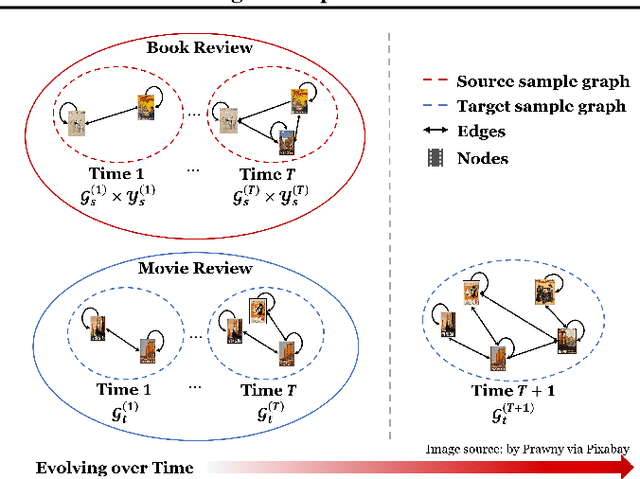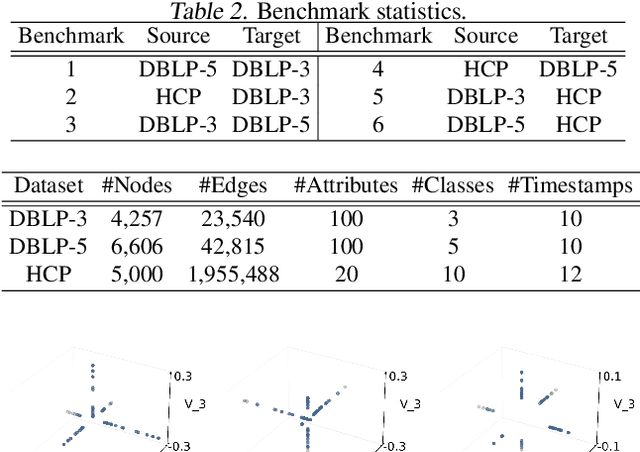Jianhui Sun
NTIRE 2025 challenge on Text to Image Generation Model Quality Assessment
May 22, 2025Abstract:This paper reports on the NTIRE 2025 challenge on Text to Image (T2I) generation model quality assessment, which will be held in conjunction with the New Trends in Image Restoration and Enhancement Workshop (NTIRE) at CVPR 2025. The aim of this challenge is to address the fine-grained quality assessment of text-to-image generation models. This challenge evaluates text-to-image models from two aspects: image-text alignment and image structural distortion detection, and is divided into the alignment track and the structural track. The alignment track uses the EvalMuse-40K, which contains around 40K AI-Generated Images (AIGIs) generated by 20 popular generative models. The alignment track has a total of 371 registered participants. A total of 1,883 submissions are received in the development phase, and 507 submissions are received in the test phase. Finally, 12 participating teams submitted their models and fact sheets. The structure track uses the EvalMuse-Structure, which contains 10,000 AI-Generated Images (AIGIs) with corresponding structural distortion mask. A total of 211 participants have registered in the structure track. A total of 1155 submissions are received in the development phase, and 487 submissions are received in the test phase. Finally, 8 participating teams submitted their models and fact sheets. Almost all methods have achieved better results than baseline methods, and the winning methods in both tracks have demonstrated superior prediction performance on T2I model quality assessment.
Client-Centric Federated Adaptive Optimization
Jan 17, 2025



Abstract:Federated Learning (FL) is a distributed learning paradigm where clients collaboratively train a model while keeping their own data private. With an increasing scale of clients and models, FL encounters two key challenges, client drift due to a high degree of statistical/system heterogeneity, and lack of adaptivity. However, most existing FL research is based on unrealistic assumptions that virtually ignore system heterogeneity. In this paper, we propose Client-Centric Federated Adaptive Optimization, which is a class of novel federated adaptive optimization approaches. We enable several features in this framework such as arbitrary client participation, asynchronous server aggregation, and heterogeneous local computing, which are ubiquitous in real-world FL systems but are missed in most existing works. We provide a rigorous convergence analysis of our proposed framework for general nonconvex objectives, which is shown to converge with the best-known rate. Extensive experiments show that our approaches consistently outperform the baseline by a large margin across benchmarks.
NTIRE 2024 Challenge on Short-form UGC Video Quality Assessment: Methods and Results
Apr 17, 2024



Abstract:This paper reviews the NTIRE 2024 Challenge on Shortform UGC Video Quality Assessment (S-UGC VQA), where various excellent solutions are submitted and evaluated on the collected dataset KVQ from popular short-form video platform, i.e., Kuaishou/Kwai Platform. The KVQ database is divided into three parts, including 2926 videos for training, 420 videos for validation, and 854 videos for testing. The purpose is to build new benchmarks and advance the development of S-UGC VQA. The competition had 200 participants and 13 teams submitted valid solutions for the final testing phase. The proposed solutions achieved state-of-the-art performances for S-UGC VQA. The project can be found at https://github.com/lixinustc/KVQChallenge-CVPR-NTIRE2024.
Towards Unified Multi-Modal Personalization: Large Vision-Language Models for Generative Recommendation and Beyond
Mar 27, 2024



Abstract:Developing a universal model that can effectively harness heterogeneous resources and respond to a wide range of personalized needs has been a longstanding community aspiration. Our daily choices, especially in domains like fashion and retail, are substantially shaped by multi-modal data, such as pictures and textual descriptions. These modalities not only offer intuitive guidance but also cater to personalized user preferences. However, the predominant personalization approaches mainly focus on the ID or text-based recommendation problem, failing to comprehend the information spanning various tasks or modalities. In this paper, our goal is to establish a Unified paradigm for Multi-modal Personalization systems (UniMP), which effectively leverages multi-modal data while eliminating the complexities associated with task- and modality-specific customization. We argue that the advancements in foundational generative modeling have provided the flexibility and effectiveness necessary to achieve the objective. In light of this, we develop a generic and extensible personalization generative framework, that can handle a wide range of personalized needs including item recommendation, product search, preference prediction, explanation generation, and further user-guided image generation. Our methodology enhances the capabilities of foundational language models for personalized tasks by seamlessly ingesting interleaved cross-modal user history information, ensuring a more precise and customized experience for users. To train and evaluate the proposed multi-modal personalized tasks, we also introduce a novel and comprehensive benchmark covering a variety of user requirements. Our experiments on the real-world benchmark showcase the model's potential, outperforming competitive methods specialized for each task.
On the Role of Server Momentum in Federated Learning
Dec 19, 2023Abstract:Federated Averaging (FedAvg) is known to experience convergence issues when encountering significant clients system heterogeneity and data heterogeneity. Server momentum has been proposed as an effective mitigation. However, existing server momentum works are restrictive in the momentum formulation, do not properly schedule hyperparameters and focus only on system homogeneous settings, which leaves the role of server momentum still an under-explored problem. In this paper, we propose a general framework for server momentum, that (a) covers a large class of momentum schemes that are unexplored in federated learning (FL), (b) enables a popular stagewise hyperparameter scheduler, (c) allows heterogeneous and asynchronous local computing. We provide rigorous convergence analysis for the proposed framework. To our best knowledge, this is the first work that thoroughly analyzes the performances of server momentum with a hyperparameter scheduler and system heterogeneity. Extensive experiments validate the effectiveness of our proposed framework.
Solving a Class of Non-Convex Minimax Optimization in Federated Learning
Oct 05, 2023



Abstract:The minimax problems arise throughout machine learning applications, ranging from adversarial training and policy evaluation in reinforcement learning to AUROC maximization. To address the large-scale data challenges across multiple clients with communication-efficient distributed training, federated learning (FL) is gaining popularity. Many optimization algorithms for minimax problems have been developed in the centralized setting (\emph{i.e.} single-machine). Nonetheless, the algorithm for minimax problems under FL is still underexplored. In this paper, we study a class of federated nonconvex minimax optimization problems. We propose FL algorithms (FedSGDA+ and FedSGDA-M) and reduce existing complexity results for the most common minimax problems. For nonconvex-concave problems, we propose FedSGDA+ and reduce the communication complexity to $O(\varepsilon^{-6})$. Under nonconvex-strongly-concave and nonconvex-PL minimax settings, we prove that FedSGDA-M has the best-known sample complexity of $O(\kappa^{3} N^{-1}\varepsilon^{-3})$ and the best-known communication complexity of $O(\kappa^{2}\varepsilon^{-2})$. FedSGDA-M is the first algorithm to match the best sample complexity $O(\varepsilon^{-3})$ achieved by the single-machine method under the nonconvex-strongly-concave setting. Extensive experimental results on fair classification and AUROC maximization show the efficiency of our algorithms.
Federated Conditional Stochastic Optimization
Oct 04, 2023Abstract:Conditional stochastic optimization has found applications in a wide range of machine learning tasks, such as invariant learning, AUPRC maximization, and meta-learning. As the demand for training models with large-scale distributed data grows in these applications, there is an increasing need for communication-efficient distributed optimization algorithms, such as federated learning algorithms. This paper considers the nonconvex conditional stochastic optimization in federated learning and proposes the first federated conditional stochastic optimization algorithm (FCSG) with a conditional stochastic gradient estimator and a momentum-based algorithm (FCSG-M). To match the lower bound complexity in the single-machine setting, we design an accelerated algorithm (Acc-FCSG-M) via the variance reduction to achieve the best sample and communication complexity. Compared with the existing optimization analysis for MAML in FL, federated conditional stochastic optimization considers the sample of tasks. Extensive experimental results on various tasks validate the efficiency of these algorithms.
Enhance Diffusion to Improve Robust Generalization
Jun 05, 2023Abstract:Deep neural networks are susceptible to human imperceptible adversarial perturbations. One of the strongest defense mechanisms is \emph{Adversarial Training} (AT). In this paper, we aim to address two predominant problems in AT. First, there is still little consensus on how to set hyperparameters with a performance guarantee for AT research, and customized settings impede a fair comparison between different model designs in AT research. Second, the robustly trained neural networks struggle to generalize well and suffer from tremendous overfitting. This paper focuses on the primary AT framework - Projected Gradient Descent Adversarial Training (PGD-AT). We approximate the dynamic of PGD-AT by a continuous-time Stochastic Differential Equation (SDE), and show that the diffusion term of this SDE determines the robust generalization. An immediate implication of this theoretical finding is that robust generalization is positively correlated with the ratio between learning rate and batch size. We further propose a novel approach, \emph{Diffusion Enhanced Adversarial Training} (DEAT), to manipulate the diffusion term to improve robust generalization with virtually no extra computational burden. We theoretically show that DEAT obtains a tighter generalization bound than PGD-AT. Our empirical investigation is extensive and firmly attests that DEAT universally outperforms PGD-AT by a significant margin.
Dynamic Transfer Learning across Graphs
May 02, 2023



Abstract:Transferring knowledge across graphs plays a pivotal role in many high-stake domains, ranging from transportation networks to e-commerce networks, from neuroscience to finance. To date, the vast majority of existing works assume both source and target domains are sampled from a universal and stationary distribution. However, many real-world systems are intrinsically dynamic, where the underlying domains are evolving over time. To bridge the gap, we propose to shift the problem to the dynamic setting and ask: given the label-rich source graphs and the label-scarce target graphs observed in previous T timestamps, how can we effectively characterize the evolving domain discrepancy and optimize the generalization performance of the target domain at the incoming T+1 timestamp? To answer the question, for the first time, we propose a generalization bound under the setting of dynamic transfer learning across graphs, which implies the generalization performance is dominated by domain evolution and domain discrepancy between source and target domains. Inspired by the theoretical results, we propose a novel generic framework DyTrans to improve knowledge transferability across dynamic graphs. In particular, we start with a transformer-based temporal encoding module to model temporal information of the evolving domains; then, we further design a dynamic domain unification module to efficiently learn domain-invariant representations across the source and target domains. Finally, extensive experiments on various real-world datasets demonstrate the effectiveness of DyTrans in transferring knowledge from dynamic source domains to dynamic target domains.
Augmenting Knowledge Transfer across Graphs
Dec 09, 2022



Abstract:Given a resource-rich source graph and a resource-scarce target graph, how can we effectively transfer knowledge across graphs and ensure a good generalization performance? In many high-impact domains (e.g., brain networks and molecular graphs), collecting and annotating data is prohibitively expensive and time-consuming, which makes domain adaptation an attractive option to alleviate the label scarcity issue. In light of this, the state-of-the-art methods focus on deriving domain-invariant graph representation that minimizes the domain discrepancy. However, it has recently been shown that a small domain discrepancy loss may not always guarantee a good generalization performance, especially in the presence of disparate graph structures and label distribution shifts. In this paper, we present TRANSNET, a generic learning framework for augmenting knowledge transfer across graphs. In particular, we introduce a novel notion named trinity signal that can naturally formulate various graph signals at different granularity (e.g., node attributes, edges, and subgraphs). With that, we further propose a domain unification module together with a trinity-signal mixup scheme to jointly minimize the domain discrepancy and augment the knowledge transfer across graphs. Finally, comprehensive empirical results show that TRANSNET outperforms all existing approaches on seven benchmark datasets by a significant margin.
 Add to Chrome
Add to Chrome Add to Firefox
Add to Firefox Add to Edge
Add to Edge